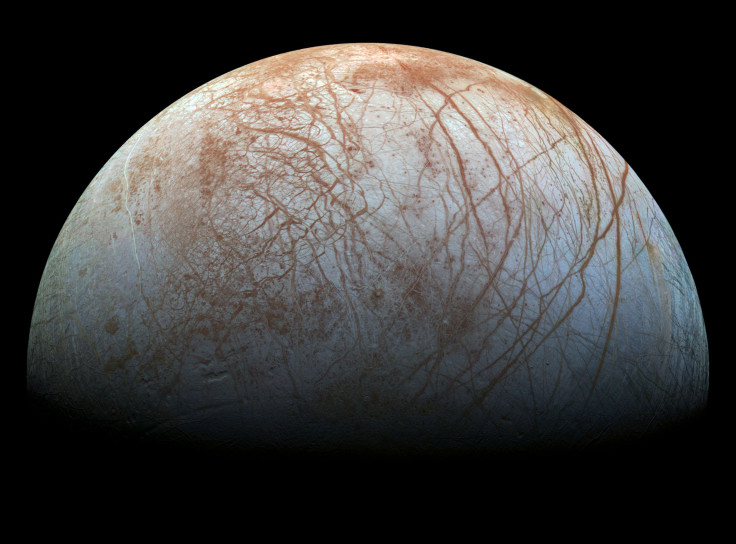NASA Jupiter Probe To Study 3 Alien Moons; One May Harbor Extraterrestrial Life
KEY POINTS
- NASA extended Juno spacecraft's exploration of Jupiter through September 2025, or until the end of its life
- The solar-powered spacecraft is also set to study three of Jupiter's moons, Ganymede, Europa and Io
- Ocean world Europa is believed by scientists to be one of the most likely places to harbor alien life
After five long years of circling Jupiter, NASA's Juno spacecraft will soon fly close to the gas giant and three of its moons, including one that scientists believe may have the conditions to harbor alien life.
NASA announced in January that it extended the Juno spacecraft's exploration of Jupiter through September 2025, or until the end of its life.
The spacecraft, protected from radiation by its titanium armor, will tighten its orbit around Jupiter in the next few years, gradually bringing it closer to the harsh, brutal environment that envelopes the largest planet in the solar system, National Geographic reported. As it gathers more data on Jupiter, its proximity will also allow it to know more about three other alien worlds -- Ganymede, Europa and Io.
Juno is set to make a close approach to Ganymede, the largest moon in the solar system, on June 7, NASA said.
Then, on Sept. 29, 2022, the solar-powered spacecraft will pass by Europa, an ice-encrusted ocean world that scientists believe may be one of the most likely places beyond Earth where alien life can be found. Although considered the smallest among the Galilean satellites, Europa holds a secret ocean deep within its icy shell said to contain more water than all of Earth's oceans combined.
The last of the three moons to be visited by Juno is Io, with two close flybys planned for Dec. 30, 2023, and Feb. 3, 2024. Due to its close proximity to the planet, Io is able to orbit Jupiter once every 42 hours, making it an extremely dangerous environment. With more than 400 active volcanoes, Io is the most volcanically active body in the solar system, according to NASA.
“I’m really excited, just thrilled that we were able to come up with this plan,” Juno principal investigator Scott Bolton of the Southwest Research Institute said of the spacecraft's upcoming moves.
”It was an out-of-the-box idea, to be able to literally make a transition from a Jupiter orbiter that studied primarily only Jupiter, to something that is going to be a full-system explorer,” he continued.
Aside from the three moons, Juno will also study Jupiter’s rings and make several passes through them.
“By extending the science goals of this important orbiting observatory, the Juno team will start tackling a breadth of science historically required of flagships,” said Lori Glaze, planetary science division director at NASA headquarters in Washington. “This represents an efficient and innovative advance for NASA’s solar system exploration strategy.”
Launched in 2011, Juno aims to gather data on Jupiter's gravity, magnetic fields, atmosphere and interior. The solar-powered spacecraft is also known for taking superb photos of various corners within the solar system -- photos that have given scientists more insight into planets' compositions.

© Copyright IBTimes 2024. All rights reserved.





















